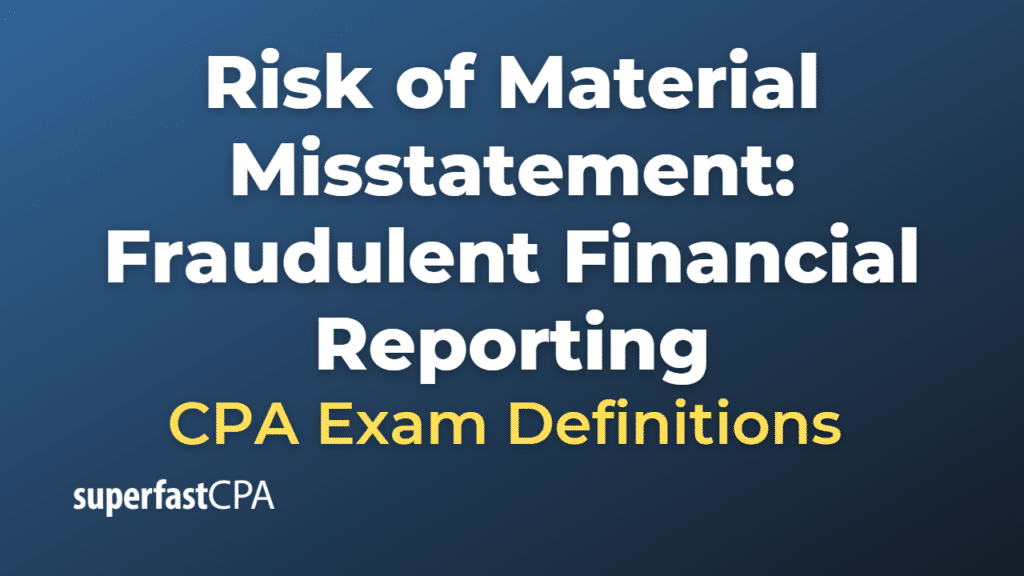Risk of Material Misstatement: Fraudulent Financial Reporting
An auditor determines the pressures, incentives, and opportunities for fraudulent financial reporting by considering the fraud risk factors that may lead to the risk of material misstatement. This process typically involves the following steps:
- Understand the entity and its environment: Gain a thorough understanding of the entity’s industry, operations, and business processes to identify factors that may create incentives, pressures, or opportunities for fraudulent financial reporting. This understanding should include the entity’s internal control environment, management’s attitudes towards financial reporting, and any known instances of fraud or unethical behavior within the entity.
- Consider management’s incentives and pressures: Analyze management’s compensation structure, performance targets, and job security, which may create incentives or pressures to manipulate financial results. Additionally, consider external factors such as market expectations, industry trends, and economic conditions that may affect the entity’s financial performance and create pressures on management to achieve specific targets.
- Assess the opportunities for fraud: Evaluate the entity’s internal controls, focusing on areas with weak controls or where management can override controls. Look for complex or unusual transactions, significant estimates, and areas with a high degree of management judgment, as these may provide opportunities for fraudulent financial reporting.
- Perform risk assessment procedures: Conduct inquiries with management and others within the entity to gather information about the risk of fraud. Consider whether there are any unusual or unexpected relationships between financial and non-financial data, and perform analytical procedures to identify potential indicators of fraud.
- Use professional skepticism: Approach the audit with a questioning mindset and remain alert to potential red flags or indicators of fraud. Exercise professional skepticism throughout the audit, especially when evaluating management’s explanations and representations.
- Communicate with the audit team: Hold discussions with the audit team to share insights, concerns, and observations related to fraud risk factors. Encourage open communication and brainstorming to identify potential areas where fraudulent financial reporting may occur.
- Evaluate the risk of material misstatement due to fraud: Based on the identified fraud risk factors and the auditor’s understanding of the entity and its environment, assess the risk of material misstatement due to fraudulent financial reporting. This assessment should guide the auditor’s approach to designing and performing audit procedures to address the identified risks.
By considering the pressures, incentives, and opportunities for fraudulent financial reporting, an auditor can better identify and address the risk of material misstatement due to fraud in a financial statement audit. It is essential for auditors to exercise professional skepticism, maintain open communication within the audit team, and continuously reassess the risk of fraud throughout the audit engagement.













